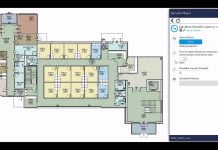Australia led the way with the world’s first formal regulations surrounding drones for both civilian and commercial use. Regulations, which the rest of the world watched eagerly and with many following in a similar fashion. In what could have been seen more as a reactive response due to the rapid advancement in drone technology, and possibly public perception, the result was a clamp down on commercial use and a somewhat costly process to get certified.
Moving forward, and today marks an important step forward for commercial drone use. The introduction of Part 101 by CASA (Civil Aviation Safety Authority) to the RPA (Remotely Piloted Aircraft) legislation cuts the previous red tape. Despite still requiring certification for larger drones and for operating under specialised circumstances, these changes allows for drones under 2kg in weight to operate without the need for an operating certificate, so long as the operator agrees to standard operation conditions:
- You must not operate your RPA in a way that creates a hazard to another aircraft, another person or property.
- You must only fly during the day and keep your RPA within visual line-of sight. This means being able to see the aircraft with your own eyes (rather than through first-person-view (FPV)) at all times.
- You must not fly your RPA higher than 120 metres (400ft) AGL.
- You must keep your RPA at least 30 metres away from other people.
- You must keep your RPA at least 5.5km away from controlled aerodromes.
- You must not fly your RPA over any area where, in the event of a loss of control or failure, you create an unreasonable hazard to the safety of people and property on the ground.
- You must not fly your RPA over or near an area affecting public safety or where emergency operations are underway (without prior approval). This could include situations such as a car crash, police operations, a fire and associated firefighting efforts, and search and rescue.
- You can only fly one RPA at a time.
Most would agree that the above is just good common sense, but it is also a freshing change to have a short and easy to understand set of rules without unnecessary overcomplications. Although take note, there are a couple of additional simple regulatory steps you need to complete before you are allowed to officially operate.
This deregulation provides some amazing opportunities for various industries such as civil, mining, architecture, and construction, but without the previous costly administrative overheads. As the accuracy of aerial based data collection improves, we find ourselves nearing a point of diminishing returns where this data is almost as accurate as terrestrially gathered data, and in some cases due to accessibility issues and time restrictions it’s sometimes better.
Fortunately smaller drones like the 3DR Solo which come in under the 2kg limit facilitates faster data capturing of sites. The ability to survey a site or scan a structure in minutes rather than hours and still obtain quality data, is testament to why drones are the future of data capturing.
















